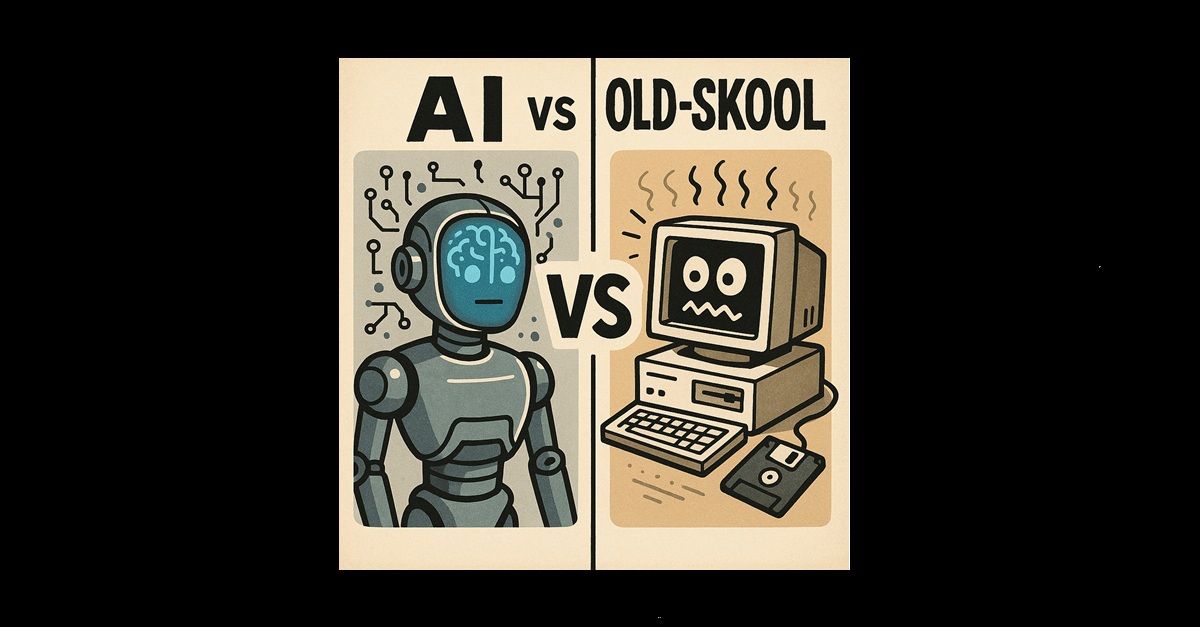AI vs Human Cost
The Real Cost of Not Upgrading: Fear, Change, and the Human vs. Tech Debate

For decades, business owners have relied on the same formula: hire more people to solve more problems. When inefficiencies pile up? Add another bookkeeper. Another AP clerk. Another analyst.
But in 2025, that formula is broken.
According to a McKinsey study, 30% of tasks in 60% of jobs can already be automated with today’s technology. And yet, many businesses are still clinging to outdated processes, spending hundreds of thousands annually on manual labor instead of investing a fraction of that in automation.
Why? One word: fear.
Fear of the Unknown = Costly Comfort
Let’s be honest. Change is uncomfortable. Business owners tell themselves:
• “At least I know what I’m getting with a human.”
• “Automation sounds expensive and risky.”
• “My team will panic if I say the word AI.”
But here’s the math that fear ignores:
• Hiring 5 clerks to manually process invoices = $200k+/year (wages, benefits, turnover).
• Automation tools to process those invoices? $10k–$20k one-time setup + a few hundred per month.
The “comfort” of sticking with humans costs 10x more than adopting even basic automation.
Fear of AI “Taking Jobs” vs. Reality
This is the elephant in the room: “If we automate, people will lose jobs.”
Here’s the flip side:
• AI doesn’t replace people—it replaces tasks.
• People don’t want to spend their days keying invoices, reconciling spreadsheets, or chasing late payments.
• Automation frees humans to do value-driven work: strategy, growth, innovation, customer experience.
Think of it this way: If Henry Ford had avoided the assembly line out of fear people would lose jobs, cars might still be a luxury for the wealthy. Instead, the auto industry exploded and created millions of jobs.
The same principle applies here: automation creates opportunity by shifting talent into higher-value roles.
Predictive Analytics: The Future Is Already Here
Fear keeps many businesses looking backward. But predictive analytics is showing us what the future cost of inaction looks like:
• Companies that adopt automation see 20–40% cost savings in operations (Gartner).
• Businesses that don’t? They face rising labor costs (wage inflation + benefits), higher error rates, and slower response times.
• By 2030, automation could contribute $15 trillion to the global economy (PwC) — meaning those who resist won’t just lag, they’ll be priced out.
Human vs. Tech: The Hidden Costs of “Staying the Same”
Here’s the part most owners don’t want to face:
• Human Costs: burnout, turnover, hiring/training cycles, errors, compliance risks.
• Tech Costs: initial setup, training, ongoing maintenance.
Which is more predictable? Which scales?
The truth: not changing is far riskier than upgrading. Businesses spend years bleeding money into inefficiency simply because they’re afraid to flip the switch.
The FOCO Reality Check
At OptiBiz, we call it FOCO™ — Focus On Cash Opportunities. Every business has hidden leaks, waste, and inefficiencies disguised as “just the way we’ve always done it.”
The question is:
• Will you keep hiring more people to patch those leaks?
• Or will you build smarter workflows that stop the leaks for good?
Because here’s the kicker:
👉 AI isn’t coming to take your job. But ignoring it might.
Final Thought
Change is hard. But staying the same is expensive. The companies that thrive over the next 5 years won’t be the ones who hired more clerks—they’ll be the ones who had the courage to embrace automation, empower their teams, and engineer profitability.
If fear is holding you back, ask yourself: What’s scarier? AI helping you run smarter… or losing ground to competitors who already made the leap?
____________________________________________________________________________________
💡 Ready to explore your automation opportunities? Let’s start with a simple audit of your workflows. You’ll be shocked at how much cash you’re leaving on the table by doing things “the old way.”
